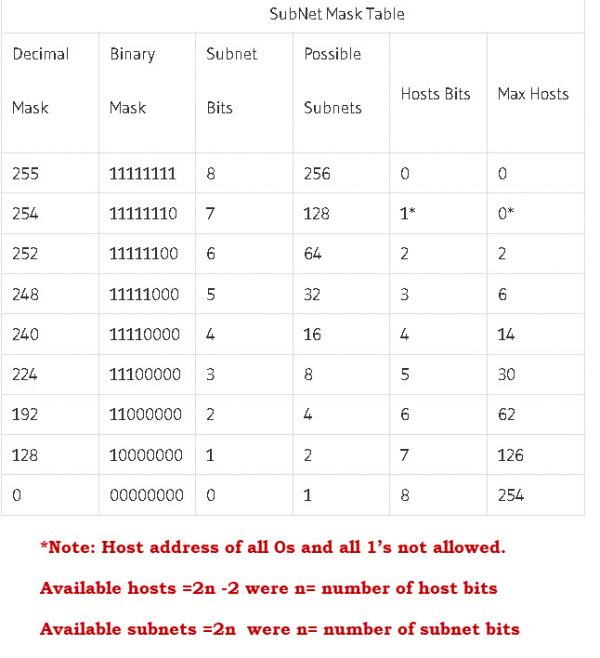

For example:Ĭan be converted into CIDR notation thinking that the two octets with 255 value correspond to 8+8 bits set to one, while 192 corresponds to two additional bits (see subnet mask table presented above) so a total of 8+8+2 = 18. In case of a subnet mask with a non-default value, it’s easy understanding how the mechanisms work. The following rapid conversions need to be memorized: In the example presented just above, the subnet mask is the same but it can be expressed using three different notations: binary, decimal, CIDR.įor the sake of the IP subnetting, it’s fundamental remembering that a decimal value of 255 corresponds to a ‘1111 1111′ so eight bits all set to one. It’s very important understanding how the binary/decimal/CIDR notations are different expressions of the same concept. IP Addresses are divided in classes and the following subnet masks are the defaults for the classes A-B-C: As shown in the table, the shortest subnet mask has a length of /8 (corresponding to 255.0.0.0) while the longest has a length of /32 (corresponding to 255.255.255.255). Since the ‘1’ bits need to be contiguous, the octets of the subnet mask can only have the following values: 128, 192, 224, 240, 248, 252, 254, 255. The next table illustrates all the valid subnet masks: Subnet Mask The subnet mask is basically a mask of continguos bits all set to ‘1’ starting from the left side. The IP subnet mask is a key component to determine the length of a subnet. The following table shows how the IP addresses are incremented…doesn’t remind of an odometer? The octets are composed by 8 bits each, so they can only cover decimal values in the range 0-255. For that reason, in the next table when an octet reaches 255, the next value is again zero.

It’s very important understanding how the IP addresses are natively binary numbers (being used in electronic devices) so each increment is done bitwise. The first value is a zero and rotating around it reaches 255 before starting again from zero.
#27 SUBNET MASK TABLE FULL#
The cylinders spin around and after a full cycle they start again from the same initial number. Think about a car odometer!Ī simple way to imagine the IP addresses is thinking of them as they were the numbers of an old fashioned odometer. An example of IP address in dotted notation is 199.234.8.78 where each number is an octet. Each octet, being composed by 8 bits, can cover the decimal range 0-255. An octet is a group of 8 bits, and the different octets are separated by dots. To simplify the use of the IP addresses, the binary number is often split in 4 octets. If the addressing space wasn’t hierarchically organized, it would be possible to connect around 4.3 billions network devices. It’s a 32 bits number that converted in decimal covers the range 0-4.294.967.296 (i.e.

An IP address is a unique identifier for a device connected to a network.


 0 kommentar(er)
0 kommentar(er)
